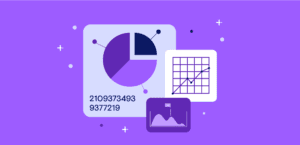10 ways companies are collecting your data and how you can put the power back in your hands. Learn why and how companies collect your personal data.
Big Tech collects personal data and uses it to turn a profit. The first step to data empowerment is knowing how and why your data is collected. The only one who should be in control of your data is you.
While companies have relied on various personal data collection methods for decades, social media and smart devices have amplified those resources.
Personal data collection is hardly a new concept. The more advertisers can understand their audience, the more they can refine their messaging into an optimized package. Brands like Pampers or Jack in the Box collect personal data. This helps them target the right audience. They can also deliver the right message at the right time.
While companies have relied on various personal data collection methods for decades, the advent of social media and smart devices amplified those resources beyond even Don Draper’s wildest imagination.
Why Do Companies Collect Personal Data?
Companies collect your personal data for a myriad of reasons. However, the most common reason for gathering information is to turn a profit. Large corporations put your personal data to work to sell information to advertisers. They are passing your data along so that advertisers can reach their target audience.
Big Tech allows ad companies to pay to host their advertisements on sites where they feel their target audience spends the most time. Big Tech gets paid for the ad real estate and the advertisers are able to sell more. Amazon is a huge proponent of data collection.
In 2021, they were able to make $837,330.25 in revenue in the first quarter alone. This was made possible by collecting and using customer information. Your personal data provides a robust profile on your digital habits, likes, dislikes, and browsing history.
When Big Tech harnesses your digital footprint, they can serve you personalized ads and product feeds to grab your attention and keep you scrolling. The longer you stay online, the more ads you see, which turns into money for Big Tech.
It is important to be aware of these practices so that your data is not used or sold without your consent. Being aware allows you to be empowered by your data and take control of its usage. Data and technology education is a key step in learning best practices for data protection and user control.
What Are The Different Types of Data?
Our personal data includes more than just names and addresses. It encompasses our thoughts, beliefs, attitudes, and habits, giving insight into our psyche.Every click and keystroke generates new insight into the wants and needs of a specific audience. Companies and analysts traditionally divide that information into two data camps: qualitative and quantitative data.

Quantitative data is the data we generally think of—numbers, metrics, values—objective figures that measure “what” or “how many.” How many purchases did our audience make this week? How much time did they spend on Instagram? If the method generates a fact, then it’s most likely quantitative.
Quantitative data is the backbone of statistics, making it the perfect data set for anticipating trends, optimizing ad sets, and measuring performance. Quantitative data collection methods break down things like buying habits and market awareness into a numeric value and is ideal for making informed predictions.

By contrast, qualitative data collection methods take a more subjective approach to understanding an audience. Rather than focusing on numbers, qualitative research shifts its attention to people and understanding the “why” behind their decisions.
Why did this product stand out? What didn’t they like about this packaging? Qualitative data is based on opinions and insights. It helps understand people’s values and beliefs, making it ideal for tasks like developing products and testing messages.
Both quantitative or qualitative data can help companies create data profiles that help a company make a profit. They’re going to make a profit by either utilizing your data to make their product better or by simply selling it to other companies.
What Are The 10 Data Collection Methods?
These types of data collection methods help companies worldwide better understand the wants, needs, and beliefs of their customers. These are the collection methods companies use to refine their strategies, products, and messages for maximum impact.
- Surveys
- Observations
- Questionnaires
- Interviews
- Focus groups
- Online Tracking
- Transactional data tracking
- Online marketing analytics
- Social media monitoring
- Form fills and registration data

1. Surveys
Method: Quantitative
Perhaps an advertiser’s most reliable method for collecting personal data, surveys. When a company conducts surveys they ask a series of questions and collect answers from a wide variety of people to create a more inclusive final data set. Surveys thrive when describing the attitudes and opinions of large groups of people.
By expanding the respondents across social groups, companies can paint a generalized picture of how that population may respond. Whether they are served as an online survey as an ad before your next YouTube video, an unexpected phone call, or a written submission, surveys are familiar, relatively objective, and easy for companies to execute at scale.

2. Observations
Method: Qualitative
If surveys are an advertiser’s most reliable data collection method, observations are certainly the oldest. From watching animal behavior to reading someone’s body language, humans have relied on the power to observe to keep us alive since the dawn of time. Similarly, companies use observations to better understand human behavior.
Strategies like in-store monitoring track customer movements to determine where to place hot-ticket items. At a larger scale, companies can rely on market observations to inform how likely the public is to respond positively to a product announcement.

3. Questionnaires
Method: Both
Like how all squares are rectangles, but not every rectangle is a square, all surveys are questionnaires, but not every questionnaire is a survey. A questionnaire can leverage both open-ended and closed-ended questions to generate a better understanding of its respondents.
While surveys scale their answers to identify trends, questionnaires limit their scope to the immediate audience to help shape a specific knowledge of the individual.

4. Interviews
Method: Qualitative
Similar to a questionnaire, interviews focus on generating qualitative data about a specific audience through a conversation. While face to face interviews can undoubtedly take a more structured approach, the strength of this method is its ability to adapt and generate deeper context as needed.
Through the interview process, companies can better understand the subject’s opinions, experiences, and ideals by compiling research questions and executing a structured data collection process.

5. Focus groups
Method: Qualitative
Much like an interview, focus groups ask a series of open-ended questions designed to shape how the company comprehends an audience—only this time, that audience is a diverse group of people rather than an individual. By generating a range of responses, companies can gather opinions more efficiently and effectively.
A successful focus group relies on a talented moderator that can direct the conversation. While interviews often tell a consistent story from question to question, it is reasonable to expect participants’ opinions to change and evolve as they interact with the other group members. One of the downsides of focus groups is that oftentimes they can be time consuming and expensive. Therefore, many companies opt for passive data collection methods.
![]()
6. Online tracking
Method: Quantitative
This is where we bring our data collection methods into the 21st Century. Online tracking gathers data like IP addresses, cookies, browser fingerprinting, and more in real time to create a more complete view of someone’s digital habits and preferences.
The digital counterpart to observational data, online tracking helps companies optimize their sites and services to provide a more personalized user experience.
![]()
7. Transactional data tracking
Method: Quantitative
Whether it’s for taxes or trends, most companies keep a deep database of transactional data including sales orders, invoices, shipping documents, credit card payments, and insurance claims.
In recent years, organizations have begun to realize the treasure trove sitting in those servers. Now, savvy companies leverage their own transactional data to identify new trends and help them understand when to engage with their audience.

8. Online marketing analytics
Method: Quantitative
Every digital ad carries with it a deep bench of analytics. From click-through rate and engagements to likes and shares, online marketing analytics help companies manage, measure, and analyze their marketing performance to ultimately improve their return on investment.
Through A/B testing minor variables between two otherwise identical ad sets, companies can refine their messaging strategies to create a more optimized and engaging campaign for their ideal audience.
![]()
9. Social media monitoring
Method: Quantitative
When we think about social media monitoring, often the first things that come to mind are hashtags and other trend analytics. And while those features certainly play a part in how companies monitor social media, the greater value lies in listening to how audiences are talking about their brand itself.
Through a variety of tools, companies can lean into public conversations on social media to measure mindshare, public opinion, and other discussions relevant to their business.

10. Form fills and registration data
Method: Quantitative
Sometimes the easiest way to gather customer information is to just ask for it. Be it an e-book, webinar, video series, brush pack, or promotional code, companies regularly collect personal data simply by gating it behind a registration form.
By filling out the form and registering for the incentive, audiences enter themselves into the company’s lead generation system for future engagement.
The Value of Data Consent
When assessing primary data collection methods for your own companies or the companies you engage with, we urge you to consider how those practices generate consent.
Today’s personal data collection methods are at a unique crossroads. While traditional tactics like surveys and interviews certainly play a critical role in any company’s data strategy, more and more strategies actively ignore the consent of their audiences. Terms of Service take hours to read, cookies are ambiguous, and conditions are rarely easy to understand. By contrast, active data consent is an ongoing relationship with informed, conscious, and intentional agreement, not coerced acceptance.
A new relationship with your data- where you hold the power.
If you bank online, use social media, send emails through any large tech platform, then your data is already being shared and sold for profit. It’s time to reclaim its worth and use it to unlock premium rewards instead of giving it away for free. See how Invisiby works.
1. Create an Invisibly account, fill in your profile information to tell us more about you, and start earning points right away.
2. Earn points from answering surveys or connecting your account(s). Invisibly will not have access to your credentials, balances, or be able to perform actions from your connected accounts.
3. Use your points to redeem premium rewards from our growing roster of brands like Nike, Target, Best Buy, Ulta Beauty, and many more.

Invisibly
See your data work for you.
